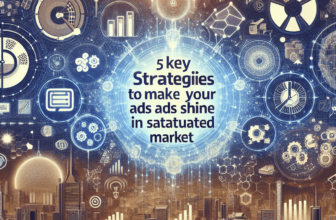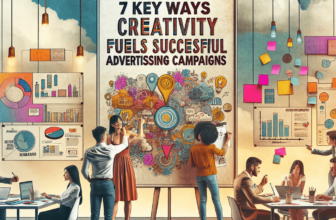[ad_1]
Music has the power to evoke emotions and memories, create a mood, and even drive action. As such, it has been an essential tool in the world of advertising for its inherent ability to connect with audiences in ways that written text and visuals often can’t. As a marketer or brand owner, understanding how to effectively use music in your ads can enhance your message, solidify your branding, and drive customer engagement.
In the ever-evolving digital landscape, resources like AdCreative.ai are now available to aid businesses in creating compelling ad copies. However, the potency of a well-chosen or meticulously composed song, musical score or jingle as part of your advertising strategy should not be undermined. This article, will delve into 10 proven ways you can harness the power of music in your advertising to create more impactful, memorable, and persuasive ads.
1. Understand Your Target Audience
Before selecting music for your ad, it’s important to have an in-depth understanding of your target audience. A techno beat might work for a younger demographic, while a slow, vintage jazz piece might appeal more to an older group. Each genre elicits a different emotion and feeling, so it will all depend on who you’re trying to reach and what you want them to feel. Analyze your audience demographics and their preferences, then couple this with the message you wish to convey with your ad.
2. Create a Consistent Brand Identity
Music plays a major role in creating and reinforcing your brand’s identity. You should select music that aligns with your brand image, values, and product/service offering. Consistent use of a specific style or genre can lead to increased brand recognition, as customers can instantly connect the music to your brand.
3. Evoke Emotion
One of the most important roles of music in advertising is to evoke emotion. Music can make people feel happy, sad, excited, nostalgic – the list goes on. Use music that taps into the emotions you want your consumers to associate with your product. A well-placed emotional climax in a song can create an impactful connection with your audience and make your brand more memorable.
4. Pace and Rhythm Matter
The pace and rhythm of music can intensify or diminish the impact of your ad. Fast-paced music can create a sense of urgency or excitement, making it perfect for product launches or sale announcements. Conversely, slower-paced music brings out emotions and allows viewers to absorb more intricate details of your advert.
5. Leverage Well-known Tracks
Including popular, well-recognized tracks in your ads can quickly grab your audience’s attention, especially if it’s a current trend or classic hit that resonates with them. However, be certain to abide by copyright laws and properly secure the necessary rights for usage.
6. Original Composition
Creating original scores too can prove advantageous. This provides you with complete control over the emotions and messages you want to convey, and it affords your brand the unique opportunity to own your sound: think Intel, McDonald’s, or NBC.
7. Silent Breaks and Sound Effects
Sometimes it’s not just about the music – strategic silence or effective sound effects can add an extra layer of impact. A sudden silent break can highlight a visual or tagline in your ad, leaving a dramatic effect that encapsulates your message in the audience’s mind.
8. Music as a Storytelling Tool
Music is a powerful storytelling tool. A well-chosen track can help create a narrative that adds depth to a product or service presentation, guiding the viewer through the story you wish to tell.
9. Evaluate And Test Your Music Choice
Before rolling out your ad, test it with a small group that matches your target demographics. Survey their reactions and measure how the music used influenced their overall perception of your ad.
10. Legal and Ethical Considerations
Always uphold legal and ethical standards when using music in advertising. All music is protected by copyright laws, and breaching these can result in hefty penalties. Always obtain proper permissions, licenses, and credits before using any music. Some options include royalty-free music or licensing tracks from composers or music libraries.
All things considered, effectively using music in advertising could spell the difference between a ‘forgettable’ ad and an impactful connection with your audience. To make this process easier, consider engaging tools like Adcreative.ai – a convenient, intelligent ad copy generator. While this AI focuses mainly on textual content for ads, adding your meticulously chosen music to the ad mix can work wonders.
In conclusion, music is an incredibly potent tool in advertising, but it requires strategic and careful use. Understand your audience, align with your brand, elicit appropriate emotions, be conscious of pace and rhythm, leverage well-known tracks or create original ones, use silent breaks and sound effects, guide with a narrative, test your music, and above all, honour legal obligations. That way, you’re not just creating an ad – you’re creating an ad with a profound resonance.
[ad_2]







